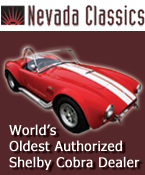
 Not Ranked
Not Ranked
 351c Decode
351c Decode
HI I HAVE A 351C FORD V8 FROM A ISO RIVOLTA DOES ANY BODY KNOW WHAT THE NUMBERS MEAN ,ALSO THE BHP -C/R HEADS 1020 61-53 DIZ DA 3 4V ROCKER BOX 00447G6HB 351C 351GP 6005a SO 1710 CAM B 6 OR 9 MANIFOLD DIZE 9425BB CARB D2ZFBB DIL13 BLOCK D2 AE CA 1L15 L6135 1717, IT HAS FLAT TOP PISTONS AND 2.19 INLET VALVES ,ALSO WHAT CAM CARB MANIFOLD I WOULD NEED TO GET 350 -400 BHP FOR STREET USE THANKS TWO PACK UK COBRA CLUB MEMBER
|


